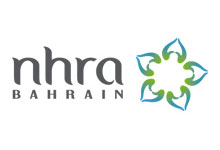The article provides an overview of the approach to be followed in the context of the transition to the new EU-wide regulatory framework for medical devices.

Table of Contents
The NHRA, Bahrain’s regulatory agency in the sphere of healthcare products, has published a guidance document dedicated to transitional provisions. The document provides an overview of the applicable regulatory requirements, as well as additional clarifications and recommendations to be taken into consideration by medical device manufacturers and other parties involved in order to ensure compliance.
At the same time, the authority reserves the right to make changes to the guidance and recommendations provided therein, should such changes be reasonably necessary to reflect corresponding amendments to the underlying legislation.
Introduction
In response to the evolving regulatory landscape in Europe, marked by the transition from Medical Directives to Medical Device Regulations (MDR), a pressing concern has emerged regarding the adequacy of notified bodies. Despite a notable increase in the number of notified bodies designated in accordance with these new Regulations, the current capacity remains insufficient to ensure the timely conformity assessment of the vast array of medical devices that are still operating under certificates issued in accordance with the previous Directives.
As the deadline for the transitional period looms, manufacturers and other stakeholders are faced with significant challenges in maintaining compliance. This guideline is designed to offer practical solutions tailored to the various scenarios that stakeholders might encounter during this transitional phase.
The guidance provided here is intended to replace the previous verification process of the CE certificate only. It is important to note that while the CE certificate itself may have expired, all other requirements outlined in this guideline must still be adhered to, and the necessary documentation must be attached to the application.

Case Scenarios
In order to assist the parties involved with understanding the applicable regulatory requirements, the document also provides a few case scenarios illustrating the approach. It is important to mention that compared to the previous version of the guidance, a few cases-examples have been removed as no longer relevant.
Case 1: Importation Before MDD Quality Assurance Certificate Expiry
In situations where the production of a medical device intended for importation occurred before the expiration of the Medical Devices Directive (MDD) Quality Assurance Certificate, specific documentation must be submitted to replace the CE certificate verification.
The required documents include:
- Manufacturer’s Letter: A letter from the legal manufacturer confirming that the product was manufactured before the expiry of the MDD Quality Assurance Certificate.
- Notified Body Letter: A letter from the notified body stating that the legal manufacturer is in the process of transitioning to MDR. This letter must be directly related to the device in question, either by reference to the scope of the device, a previous certificate, or the specific name of the device.
These documents serve to ensure that the device in question was indeed produced under a valid certification and that the manufacturer is actively working towards meeting the new regulatory requirements under the MDR.
Case 3: Extension of Expired Certificates Under Regulation (EU) 2023/607
According to the latest amendments in Regulation (EU) 2023/607, certificates that were still valid as of 26 May 2021 but expired before 20 March 2023 may be eligible for an extension. This extension is contingent upon the manufacturer having signed a written agreement with a notified body in accordance with Section 4.3, second subparagraph of Annex 7 of the MDR, or if a competent authority of a Member State has granted a derogation. In such cases, the following documentation must be provided:
- The Agreement or Derogation Letter: This document must be accompanied by proof of authenticity.
- Notified Body’s Confirmation Letter: A letter issued by the notified body confirming that the legal manufacturer has met the applicable conditions for the extension, along with verification of this compliance.
Alternatively, if the agreement or derogation letter is not available, a Manufacturer’s Declaration can be provided as a substitute, following the guidelines set out in Annex I.
Case 5: Use of Manufacturer’s Declaration of Conformity Before 26 May 2021
For both active and non-active medical devices, applicants may continue to use a Manufacturer’s Declaration of Conformity issued before 26 May 2021. This option is available to devices that could benefit from the extended transition period, provided that the manufacturer has implemented an MDR-compliant Quality Management System (QMS) and has submitted a formal application to a notified body for MDR Conformity Assessment. The required documentation includes a Notified Body’s Confirmation Letter. This letter should confirm that the legal manufacturer has complied with the necessary conditions under the MDR and provide verification of this compliance.
For devices that have been up-classified under the MDR, the deadlines for compliance with the Manufacturer’s Declaration of Conformity are as follows:
- Class III (excluding custom-made implantable) and IIb implantable legacy devices: Deadline of 31 December 2027.
- Other Class IIb, Class IIa, Class Is, and Class Im legacy devices: Deadline of 31 December 2028.
For In-vitro diagnostic devices (IVDs) that did not require the involvement of a notified body under the previous In Vitro Diagnostic Directive (IVDD) but do require such involvement under the In Vitro Diagnostic Regulation (IVDR), the following deadlines apply for compliance:
- Class D self-declared IVDD devices: Deadline of 26 May 2025.
- Class C self-declared IVDD devices: Deadline of 26 May 2026.
- Class B and Class A sterile self-declared IVDD devices: Deadline of 26 May 2027.
These deadlines ensure a structured transition, allowing manufacturers to comply with the new regulatory framework while avoiding disruption in the availability of essential medical devices.
Additional Documentation for Transfer of Surveillance Activities
In cases where the surveillance activities of “legacy” medical devices are being transferred to another notified body for MDR certification, the National Health Regulatory Authority (NHRA) requires additional documentation beyond what is specified in the previous cases. Specifically, applicants must provide a signed transfer Tripartite Agreement between the manufacturer, the new notified body, and the old notified body. This agreement should follow the template provided in Annex I or be an equivalent document as per the latest EU regulatory amendments and recommendations.
Annex I: Templates and Forms
To facilitate compliance with the guidelines, the following templates and forms are provided in Annex I:
- European Commission’s Confirmation Letter Template: A standardized format for the confirmation letter required from the European Commission.
- MedTech Europe’s Manufacturer’s Declaration Template: A template designed to ensure that manufacturers’ declarations meet the necessary regulatory standards.
- Team NB’s Tripartite Agreement Template: A template provided by the European Association of Medical Devices Notified Bodies (Team NB) for the tripartite agreement required during the transfer of surveillance activities.
These templates are intended to standardize the documentation process, ensuring that all parties involved can efficiently meet the regulatory requirements during this transitional period.
Conclusion
In summary, the present document emphasizes how important for all stakeholders to understand the specific requirements and deadlines that apply to their products. As it is stated by the authority, manufacturers can ensure a smoother transition to compliance under the new MDR and IVDR frameworks, thereby avoiding potential disruptions in the availability of medical devices by following the guidelines and utilizing the provided templates.
How Can RegDesk Help?
RegDesk is an AI-powered Regulatory Information Management System that provides medical device companies with regulatory intelligence for over 120 markets worldwide. It can help you prepare and publish global applications, manage standards, run change assessments, and obtain real-time alerts on regulatory changes through a centralized platform. Global expansion has never been this simple.

